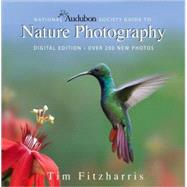
Tim Fitzharris is well known for his regular column in Popular Photography and Imaging magazine. He is the author and photographer of more than 30 books, including National Audubon Society Guide to Landscape Photography; Rocky Mountains; and Big Sky. He lives in Santa Fe, New Mexico.
| Introduction | |
| The Right Equipment | |
| Basic Kit | |
| Tripods | |
| Super-telephoto Lenses | |
| Working in the Field | |
| Winter Photography | |
| Nature Photography's Year | |
| Essential Skills | |
| Exposure | |
| Reading the Light | |
| Depth of Field | |
| Motion Effects | |
| Modifying Natural Light | |
| Designing the Picture Space | |
| Photographs as Impressions | |
| Adventures with Wildlife | |
| Getting Close | |
| Animals in Action | |
| Wildlife Portraits | |
| Light on the Land | |
| Finding Photogenic Landscapes | |
| The Power of Perspective | |
| Nature's Mystical Mirrors | |
| The Close-up World | |
| Working at Close Range | |
| Wild Flora | |
| Digital Processing | |
| Digital Darkroom Equipment | |
| Preparing Images for Presentation | |
| Resource List | |
| Table of Contents provided by Publisher. All Rights Reserved. |
The New copy of this book will include any supplemental materials advertised. Please check the title of the book to determine if it should include any access cards, study guides, lab manuals, CDs, etc.
The Used, Rental and eBook copies of this book are not guaranteed to include any supplemental materials. Typically, only the book itself is included. This is true even if the title states it includes any access cards, study guides, lab manuals, CDs, etc.